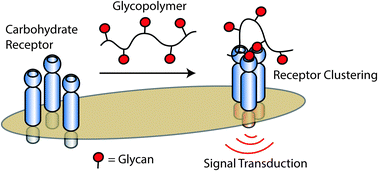Glycopolymer probes of signal transduction†
Abstract
Glycans are key participants in biological processes ranging from reproduction to cellular communication to infection. Revealing glycan roles and the underlying molecular mechanisms by which glycans manifest their function requires access to glycan derivatives that vary systematically. To this end,

- This article is part of the themed collections: Carbohydrate chemistry and Celebrating our 2019 Prize and Award winners

 Please wait while we load your content...
Please wait while we load your content...